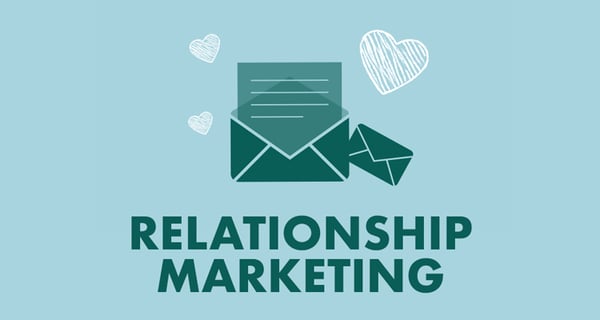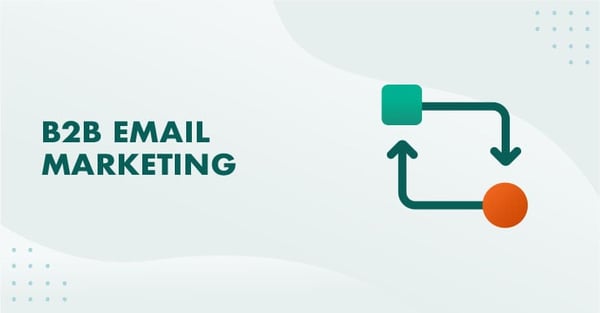Post summary:
- The volume of emails sent daily
- Why best practices may not work for you
- 8 email marketing myths you need to ignore
More than 290 billion emails are sent every single day.
And it’s no surprise then that as a consumer, you can expect to receive 2.5 promotional emails per week.
As with each marketing tactic, myths grow greater over time. They may start out with some truth but as time goes by, they can grow into a web of exaggeration. B2B email marketing is no different.
It's important to remember that email marketing myths are based on averages - Billions of emails analyzed into a single "best practice". What may work for one business, may not work you and that you shouldn't confuse myths with facts.
It’s time we put an end to these myths. This article will debunk eight email marketing myths.
Let's get started.
Myth #1: The more emails you send, the more you annoy your customers
Email frequency is a hot topic in email marketing, and research has found that email frequency is the number one reason why people unsubscribe, but don’t let that fool you into thinking you cannot send more than one email per week.
If your email campaigns are relevant, then your subscribers are happy to read and take action as research by eMarketer found:
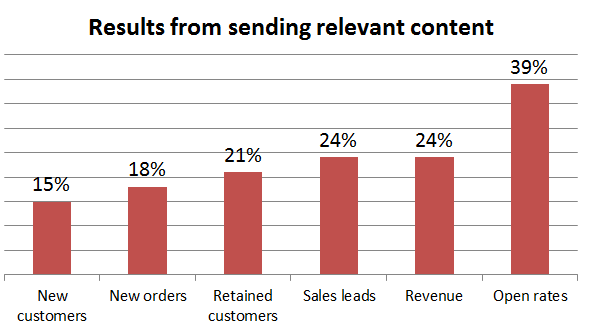
By simply sending one more email campaign per month to a list of 2.5 million subscribers, Marketing Charts found that that this extra email could lead to an additional 950,000 opens and 850,000 clicks, which is an additional €600,000 in sales (the average email generates €0.07).
Myth 2: Don't send the same email twice
The average open rate for email marketing campaigns in 2020 was 22.1%, which means that more than 75% of your database do not read your email.
There are many reasons for why a campaign does not perform as you had hoped for. Your emails may have bounced; some people might have been too busy to read it; while others may have deleted it by accident.
Instead of creating a new email design and copy in order to communicate the same message, it is perfectly OK to resend the same email again, with the exception of only resending it to subscribers who didn't open the email the first time. Or instead, simply choose a different email marketing template and use the same copy.
When resending the same email, keep these three tips in mind:
- Only resend your most important email campaigns
- Change the subject line the second time you send it
- Wait at least 72 hours before resending the same email
Resending the same email again is a great way of doubling your email response.
Myth 3: Avoid using Spam keywords in your subject line
In the early days of email marketing, unsolicited emails were a much more common feature in your inbox that led to email service providers developing strict Spam filters. If you wanted your email to be sent directly to the Spam folder, all you had to do was capitalize Spam keywords such as FREE, SAVE and DISCOUNT in your subject line.
We were told to avoid these keywords and your email will reach your readers inbox.

And for years, this remained best practice but the truth is, while this may have been the case several years ago, spam filters have become much more sophisticated in identifying spam, and are more likely to allow the email to be delivered based on new criteria like reputation.
Myth 4: Unsubscribes are cause for concern
If a reader clicks the unsubscribe button, they no longer want to receive emails from you.
And that's great news! If a reader unsubscribes, they are helping you cleanse your database - And saves you having to do it. 55% of marketers cite email database quality as the biggest barrier to effective email marketing. If your unsubscribe rate is less than 1%, don't worry. Most readers who do want to unsubscribe, simply won't and will either ignore your email or delete it.
In fact, research by campaigner found that 60% will delete the email and 23% mark the email as Spam. By making your subscription process simple, you can increase the quality of your email database.
Myth 5: The best day to send your email is on a Tuesday
If you analyze billions of email open rates, you will find the best open rates happen on a single day of the week, right?
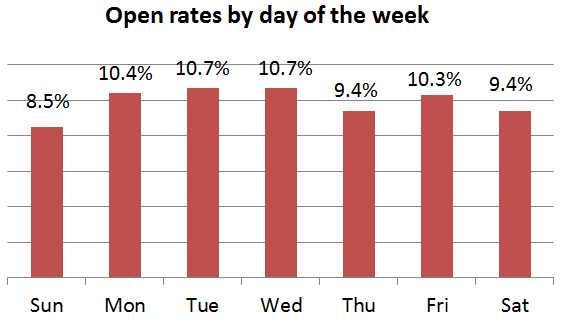
There is no universal "best day to send an email" as each business is different. The universal “best day” theory is based on analysis of millions of emails sent across all industries. And averages are misleading.
At SuperOffice, we will send out an email to our subscribers during the workday, which we have found to deliver the best results but an eCommerce store may find that they get the best response when they send an email on the weekends, when people are more likely to buy.
What we do know is that there are more emails sent during the week days than during the weekend so next time you send out your email campaign, try sending it on a Saturday or Sunday.
Myth 6: Short subject lines provide better results
Your inbox is overflowing, and you read a short subject line. It catches your attention and you open it. That’s the theory, but research by Implix found that subject lines with more than 25 characters are more likely to be read than subject lines with less than 25 characters.
And your readers are far more likely to read your email because of who the email is from (sender name), rather than the subject line.
As long as your subject line is eye-catching, then it can be as short or as long as you need it to be.
Myth 7: Open rate is the most important metric
If no one opens your email, then there's no point in sending emails. That’s what we’re taught and what most of us follow as 90% of marketers use open rate as a primary metric to base the success of the email campaign.
The problem is that open rates don't tell the whole story. For example, subscribers using Outlook have images blocked by default, which means your open rate won't be tracked accurately. Or if an email is read on a mobile device, emails are usually defaulted to text format, which again will lead to unreliable data.
Instead of looking at open rates to decide if the email was successful, look at the number of leads generated per email and conversion rates per email, which are more important metrics to measure email marketing activity on.
Myth 8: Email marketing is dying
If you search Google for ‘Email marketing is dying’ you are returned with 21 million results, but email marketing is not dead. It is evolving and is becoming more engaging.
Email marketing is most trusted form of communication with 77% of consumers choosing email over other online channels. In fact, 80% of marketers report email as the strongest performing media buy (ahead of search engine marketing and display advertising) and in 2011, email marketing brought in an average of $40 for every $1 spent.
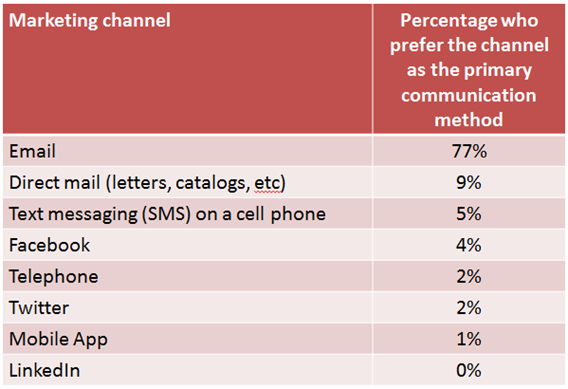
The high return on investment is why email marketing spend continues to grow.
Conclusion
Sure, if you send only one email per month (myth #1) or only send our email campaigns out on Tuesdays (myth #5), email marketing might not be the lead generator it should be. The 8 myths listed above demonstrate that successful email marketing means rethinking what you know about email marketing so you get the most benefit from your efforts.
To re-cap for the next time you send an email:
- Send more than one email per month to your customers.
- Change the subject line and resend your email as 80% do not open your email
- Test using FREE, SALES or 25% OFF on your next email subject line
- Make it easy for people to unsubscribe or change email frequency permissions
- Try sending your email out on a Saturday or Sunday
- Use a longer subject line and see if open rates and click through rates increase
- Measure leads and/ or sales per email campaign. That’s a more important metric
- Email marketing isn’t going anywhere. Instead of sending less, send more!
It's not easy to be successful at email marketing, which is why the rewards are so large for the people who understand it and do it right. Don’t just blindly follow best practices and instead test for yourself to understand what works best for your business.
For more email marketing tips, download the Email Marketing Best Practice Guide here


